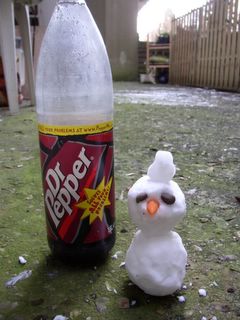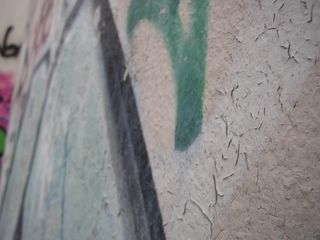Call it refining my craft... Call it an attempt at subtlety... Call it nuance and artistic eccentricity... But whatever you call it, if it's not connecting with the audience, then you probably need to provide some clarification or explanation... some kind of answer key to help solve the puzzle(s).
When I used to sit in on literature classes and creative writing workshops as a university student, I was often frustrated by the infinite quest to find deeper meaning to a piece of writing. I couldn't believe that every story was trying to develop a parallel significance; it just seemed like people had to try too hard sometimes to make a connection. Couldn't Orwell's "Animal Farm" just be about a bunch of animals? Couldn't Golding's "Lord of the Flies" simply be written as an interesting account about a bunch of boys developing their own culture on a deserted island? The others in class would talk about Stalinism or Anarchism, but it could be so hard for me to get past the face value of a story...
Until I started trying to write my own.
Indeed there is something beautiful and profound about working to create a piece that offers meaning and fascination on more than one level. As a person matures, both as a person and as a writer, it becomes more significant to say something of significance in one's work. Symbolism, allegory, and metaphor become more meaningful tools to communicate this significance and profundity with a sense of subtlety and nuance.
So it turns out that my story about the chickens in the trees is not
just about chickens. When I write about bicycle accidents, I'm not
just writing about a literal bicycle hitting literal pavement. Of course, these stories
do exist on the concrete level (catch the pun there?)-- I actually did suffer several mishaps on my bicycle during the first month of this year, and there really are chickens living along the railroad tracks in our neighborhood-- but these stories are also meant to have a transcendent quality.
Try reading the chicken story again, but think about the chickens as being wounds from our past and subconscious "buttons" of emotional response in our life that seem to get "pushed" at the most unpredictable moments in our life; similarly, read the trees and the brush from that story as being defense mechanisms and grudges and such... Think about the story on bicycle accidents as being a story on relational mishaps, times of hurting or being hurt by people you love... The "double entendre" (which basically just means "double meaning") of my most recent posting is that the word "lead" can be read or pronounced in two different ways, with completely different meanings-- both of which are meant to be applicable to the piece.
The fact that these deeper meanings are easily overlooked is the fault of the author, not the audience. As I said, I'm trying to refine my craft. This blog has been a great exercise in improving my self-expression on the most subtle and artistic levels. And I'm going to keep trying to be obviously meaningful, without being
too obvious about it. So if you check back in on this blog from time to time, you can try to read with those eyes. And hopefully, with time, I'll get better at telling beautiful stories with beautiful meaning.
I can take comfort from the fact that one of the best story tellers of all time also had the same problem that I'm experiencing. Mark 4:33 explains that "
With many similar parables Jesus spoke the word to them, as much as they could understand. He did not say anything to them without using a parable. But when he was alone with his disciples, he explained everything."
I'm going to keep working at it. Thanks for checking in on my blog. I love any comments that are posted. Stay tuned for more...





